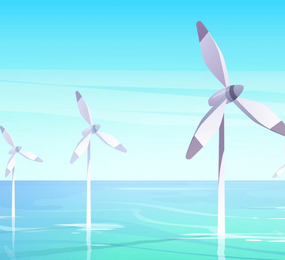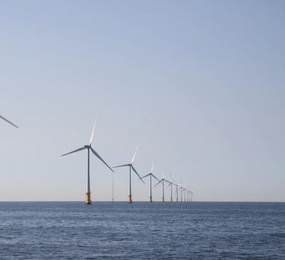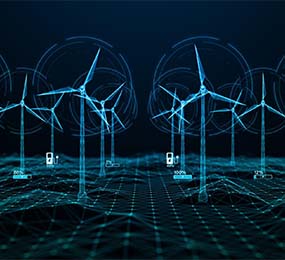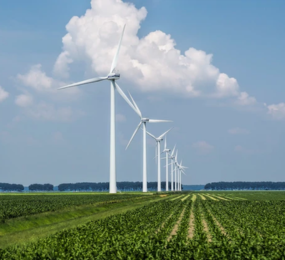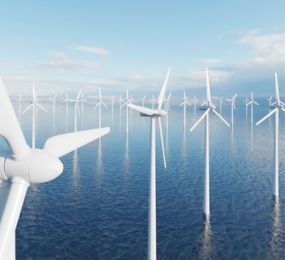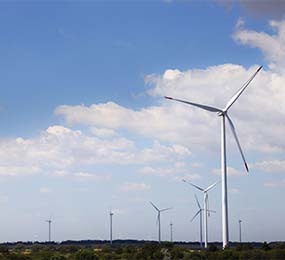As the world transitions to renewable energy sources, wind power has emerged as a leading contributor to the clean energy revolution. However, integrating a high penetration of wind energy into the electric grid presents unique challenges for utilities. In this article, we explore the Summerside Electric use case, highlighting their approach to optimal energy scheduling with a high penetration of wind energy. Join us as we delve into the significance of energy scheduling, the role of wind power, and the implications for efficient and sustainable grid management.
The Growing Role of Wind Energy
Wind energy has witnessed remarkable growth in recent years, providing a sustainable and cost-effective solution for electricity generation. As more wind farms are connected to the grid, utilities face the challenge of efficiently integrating fluctuating wind power into their energy mix. Achieving a high penetration of wind energy requires effective energy scheduling strategies that balance supply and demand, ensuring grid stability and reliability.
Understanding Energy Scheduling
Energy scheduling involves planning and optimizing the dispatch of electricity generation sources to meet consumer demand while considering factors such as cost, availability, and environmental considerations. It plays a critical role in maintaining grid stability and maximizing the utilization of renewable energy sources, such as wind power.
The Summerside Electric Use Case
Summerside Electric, a utility company in a coastal city with a high penetration of wind energy, has successfully implemented optimal energy scheduling strategies. Their approach involves:
1. Wind Power Forecasting: Accurate forecasting of wind power generation is crucial for effective energy scheduling. Summerside Electric utilizes advanced weather prediction models and historical wind data to forecast the expected output from their wind farms.
2. Real-Time Demand Monitoring: Continuous monitoring of electricity demand helps Summerside Electric anticipate fluctuations and adjust energy scheduling accordingly. This enables them to balance wind power generation with consumer demand, avoiding potential grid instability issues.
3. Flexible Energy Contracts: Summerside Electric has established flexible energy contracts that allow them to respond to dynamic conditions. These contracts enable them to procure additional electricity from neighboring grids or curtail wind power generation during periods of excess supply.
4. Energy Storage Integration: Energy storage technologies, such as batteries, play a vital role in optimizing energy scheduling with wind power. Summerside Electric has incorporated energy storage systems into their infrastructure, allowing them to store excess wind energy for later use or release stored energy during peak demand periods.
Benefits and Implications
Optimal energy scheduling for electric utilities with a high penetration of wind energy offers several benefits and implications:
1. Grid Stability and Reliability: By effectively balancing wind power generation and consumer demand, utilities can ensure grid stability and reliable electricity supply. This reduces the reliance on conventional power plants and enhances the resilience of the grid.
2. Renewable Energy Integration: Efficient energy scheduling maximizes the utilization of wind energy, reducing the need for fossil fuel-based generation. This leads to a higher share of renewable energy in the overall energy mix, contributing to carbon emissions reduction and sustainable energy transition.
3. Cost Savings and Efficiency: By aligning energy scheduling with wind power availability, utilities can optimize generation resources, reduce reliance on expensive peaking plants, and achieve cost savings. Efficient energy scheduling minimizes the curtailment of wind power and maximizes revenue generation.
4. Grid Flexibility: Implementing advanced energy scheduling techniques allows utilities to adapt to changing conditions, such as variations in wind speed and electricity demand. This flexibility enhances the operational efficiency of the grid and supports the integration of other renewable energy sources.
The Summerside Electric use case exemplifies the importance of optimal energy scheduling for electric utilities with a high penetration of wind energy. By leveraging accurate wind power forecasting, real-time demand monitoring, flexible contracts, and energy storage integration, Summerside Electric has successfully achieved efficient grid management and maximized the benefits of wind energy integration.
https://youtu.be/0wEVVL6J_Mc, explore the Summerside Electric use case and gain further insights into optimal energy scheduling with high wind energy penetration.
To register or learn more about the Forum please check here: https://bit.ly/430gLPP
For more information and group participation, contact us: [email protected]


